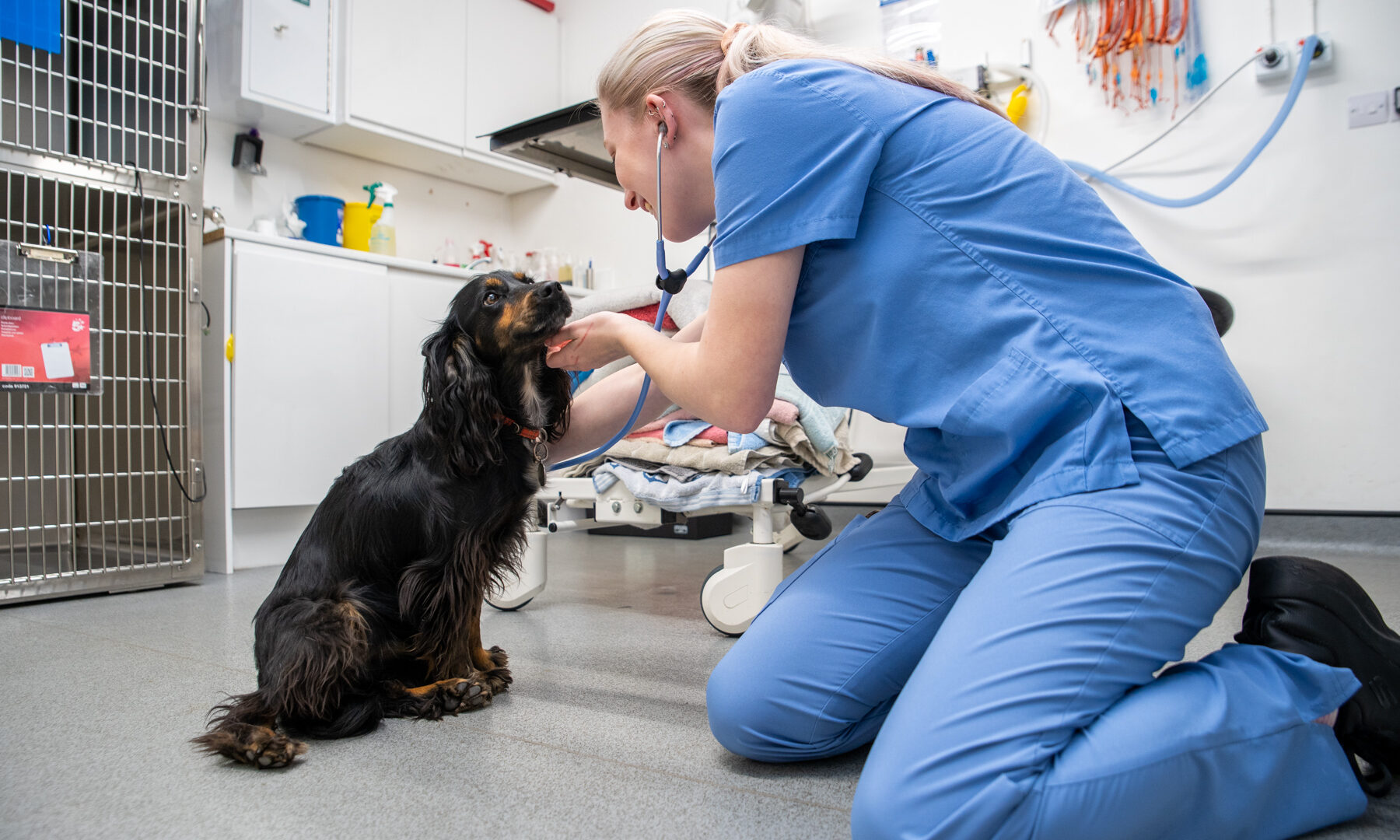Many cases in veterinary practice require a great deal of thought to work out what condition the patient may have.
Many clients say to me, it must be harder for you than a doctor to make a diagnosis as your patients can’t tell you what’s wrong with them. We as vets have to use all our senses to make a diagnosis!
A recent case springs to mind. Our client and their Westie dog had been enjoying a lovely walk along a canal towpath, with the little dog gambling around as happy as could be, when they came across a chap who had obviously had a bit too much to drink and who for unknown reason, lashed out and kicked and slapped the little dog, who understandably then ran off in a panic.
You can imagine, as any owner would be, the owner’s first concern was for her precious pet. The little dog was eventually found, but she was obviously very traumatised by the events.
A few days later, the owner called the surgery. The little dog had been constantly shaking since her trauma. She hid from people and just wasn’t her happy, friendly self.
On initial examination at the surgery, she appeared to be alright, although shaking constantly and looking very fearful.
Soon after this visit, she developed gastrointestinal signs. She had no appetite and was vomiting and passing soft stools with blood and mucus.
The dog was admitted for investigations into her condition. The team wondered if she had some internal damage or head injuries, or had eaten something unusual in her panic.
This is where we vets have to use all our senses to help reach a diagnosis. We have to look at the patient carefully all over and at results of tests carried out on the patient.
The little Westie had x-rays taken and an ultrasound examination was performed on her abdomen.
We have to listen to the patient, usually through a stethoscope, but also as they stand or move around. We touch the patient, feeling for changes in normal anatomy or for pain reactions.
Yes, we do smell patients too! Some conditions have characteristic smells, such as diabetes mellitus and kidney failure. I do draw the line at tasting though…
What did we find with the ill Westie?
- She looked normal apart from her shaking.
- The x-rays and ultrasound were perfectly normal.
- Listening to her chest, she had a slow heart rate. This is unusual in a dog who might be worried about something.
- Her coat felt a bit rough.
- She was dehydrated (meaning her body had lost more fluid than it had taken in).
- She was a little tender when we examined and felt her abdomen.
- She had no abnormal smells that could be detected.
Fluids were administered to her through her vein to counteract her dehydration, but we still did not have a definitive diagnosis of what the problem was, apart from knowing she had not been herself after a terrible shock.
The next stage was to take blood samples for analysis. We need to check that the internal organs are functioning correctly, especially the liver and kidneys.
We also look at body protein and electrolyte (these are salts and minerals which are found in the blood) levels, and carry out blood tests to check haematology levels (the amounts of red and white blood cells and platelets).
This provides information as to whether a patient may be anaemic or has an infection, amongst other things.
We suspected something quite unusual to be the underlying problem and sure enough, we found that the little dog’s electrolyte levels (sodium and potassium) were very abnormal and indicative of a condition called Addison’s disease.

What is Addison’s disease?
The correct medical term for this disease is hypoadrenocorticism which, when broken down literally, means less secretions produced from the adrenal glands.
The adrenal glands are small glands that produce certain types of hormone that the body needs to function, and can be found on the top of the kidneys.
One of the hormones affected is cortisol (a steroid hormone) and another is a hormone called aldosterone, which regulates the electrolyte and water balance of the body and is involved in the excretion of potassium and retention of sodium.
In dogs, the main cause of Addison’s disease is the dog’s own immune system accidentally attacking the adrenal glands (known as an autoimmune condition), but it can also be caused by certain drugs, haemorrhage (bleeding) or infection.
Addison’s disease can also occur if a dog has been treated with cortisol for any reason on a long-term basis and this is suddenly withdrawn. Another cause can involve the pituitary gland in the brain.
The symptoms of the disease are usually vague and non-specific, and commonly seen in pets with other conditions, such as long-term gastroenteritis or kidney diseases.
There may be vomiting and diarrhoea, which waxes and wanes, and weight loss. Increased thirst and urination is not unusual and intermittent, while intermittent shaking episodes are also characteristic.
Once the diagnosis had been made, treatment could begin. Injections have to be given monthly (to replace the aldosterone) and corticosteroid tablets given daily (to replace the cortisol).
Regular blood tests have to be taken to monitor the electrolyte levels, with the amount of injection being given altered accordingly.
A happy ending
Our little Westie is living a normal life. She occasionally shakes or has an upset tummy, but generally she is living life to the full.
She will continue to take medication and have her electrolytes monitored for the rest of her days. We will never know whether the traumatic event brought on Addison’s disease or whether it would have occurred as a matter of course. What I do know is that using all our senses on examination allowed this diagnosis to be made.
Addison’s disease is pretty uncommon, but please contact your veterinary practice if your dog shows any of these symptoms, as prompt treatment can be lifesaving.
Written by:
Margot Hunter BVMS MRCVS – Veterinary Surgeon and Clinical Director, Dunedin Vets
